What Is Plaster | Plaster Ratio | History of Plastering | Requirements of Good Plaster
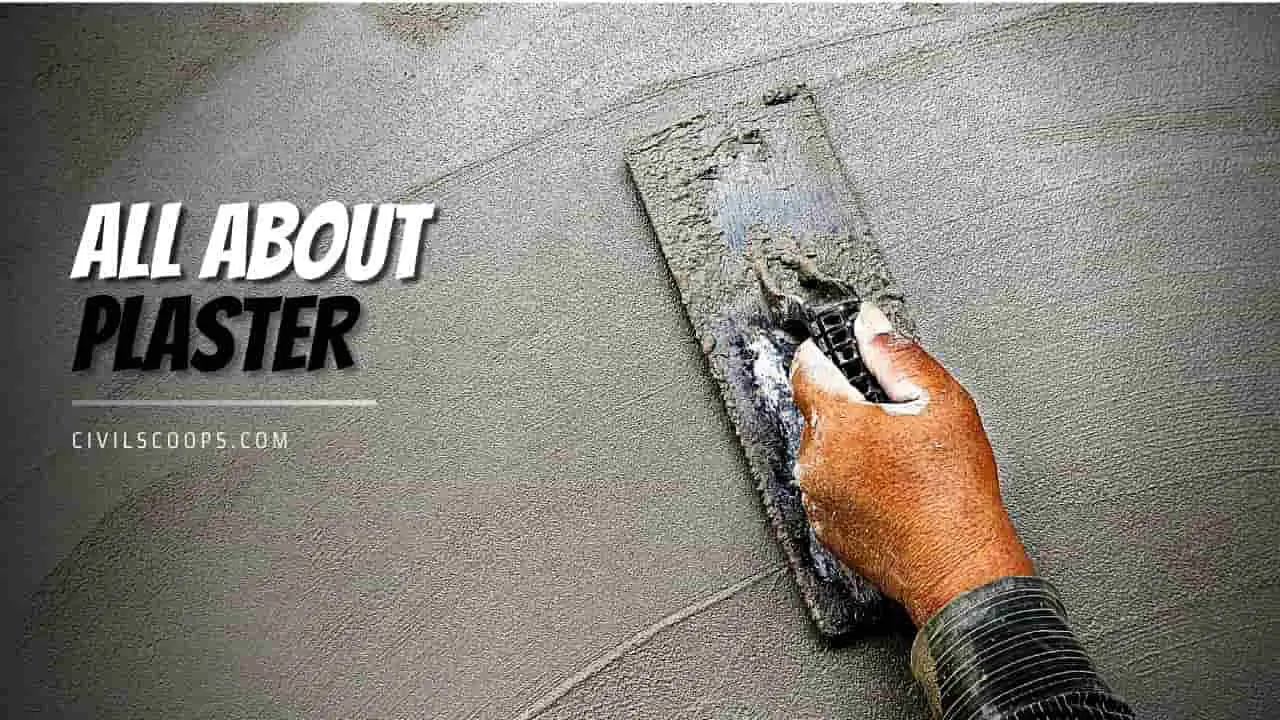
Table of Contents
What Is Plaster?
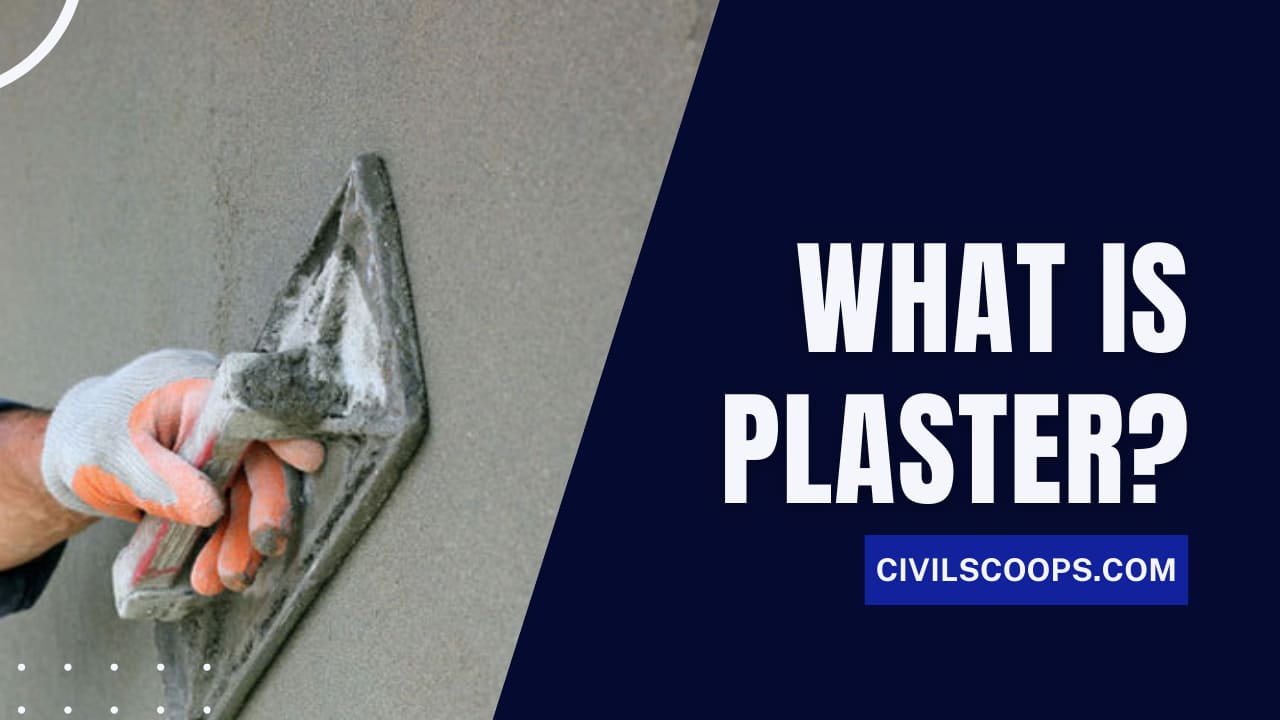
Plastering is the process of covering uneven surfaces and rough walls in the construction of houses and other structures with a plastic material known as Plaster, which is a mixture of cement or lime concrete and sand along with the required quantity of water.
Different Plastering Ratios of Cement Mortar Used

[su_table responsive=”yes”]
| Mix Ratio of Mortar | General Usage Recommended |
| 1:3 | As its a rich mortar mix, and it is used where external walls are prone to severe climatic conditions. |
| It is also used for repair works. | |
| 1:4 | Used for Ceiling and external walls |
| 1:5 | Brickwork Mortar and for Internal Plaster |
| 1:6 | For Internal Plaster (fine sand is available) |
[/su_table]
Quantities Of Cement, Sand, And Water In Various Plaster Mix Ratios:
[su_table responsive=”yes” ]
| Area | Plaster thickness | Mix Ratio of Mortar | Cement | Sand | Water |
| 10 sqm | 12 mm | 01:03 | 49.37 kg | 3.77 ft3 | 44lit |
| 10 sqm | 12 mm | 01:04 | 39.29 kg | 3.99 ft3 | 44lit |
| 10 sqm | 12 mm | 01:05 | 32.54 kg | 4.14 ft3 | 44lit |
| 10 sqm | 12 mm | 01:06 | 27.8 kg | 4.24 ft3 | 44lit |
[/su_table]
Requirements for a Good Plaster
Here, the different types of requirements for a good plaster are as follows.
- It should adhere to this background and should remain adhered to during all climatic changes.
- It should be cheap and economical.
- It should be hard and durable.
- It should be possible to apply it during all weather conditions.
- It should effectively check the penetration or entry of moisture from the surfaces.
- It should possess good workability.
- To conceal defective workmanship.
- To preserve and protect the surface.
- To provide a base for the decorative finish.
- To cover up the use of inferior quality and porous materials in the masonry work
History of Plastering
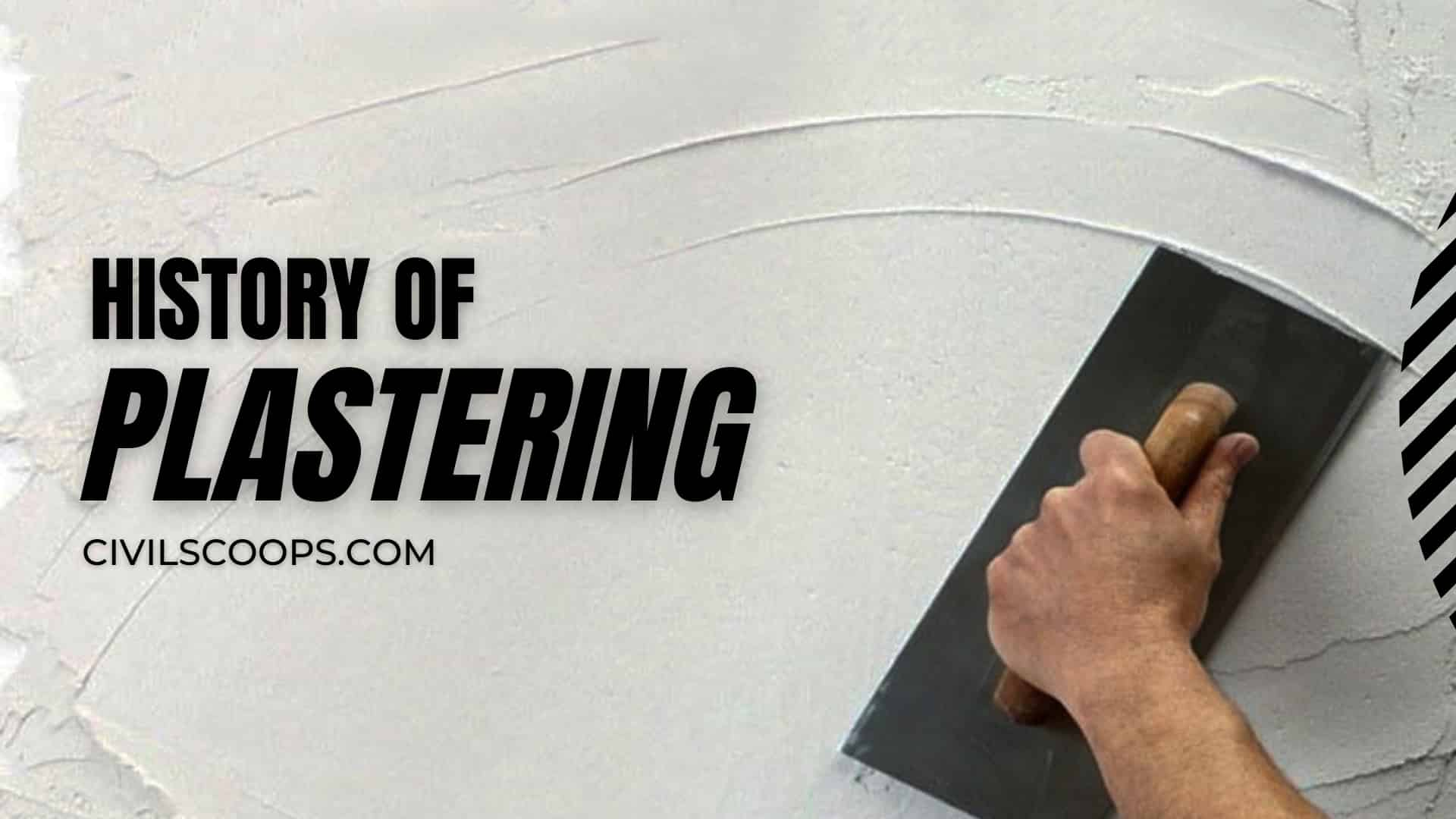
A form of plastering was utilized by primitive civilizations, creating durable and weather-resistant structures using mud. The Egyptian pyramids contain plasterwork comparable to that used today that remains hard and durable some 4,000 years later.
Greek artisans utilized Plaster, mainly to cover the exterior of temples but sometimes also interiors. Throughout history, plaster ceilings became increasingly ornamental, with those during the Tudor period being particularly extravagant.
However, the use of Plaster as a means of demonstrating artistic skill and expression had waned from the 19th century, when imitation and mechanical reproduction displaced it as a creative medium.
But, Plaster is still very commonly used as a surface finish for interior ceilings, and walls, and still sometimes for exterior walls.
Defects in Plastering
Herr, the list of defects in plastering are as follows.
- Flaking.
- Peeling.
- Popping.
- Cracks in Plastering.
- Uneven Plaster Surface.
- The softness of the Plaster.
- Blistering of Plastered Surface.
- Rust Stains on Plastered Surface.
- Efflorescence on Plastered Surface.
Type of Plaster
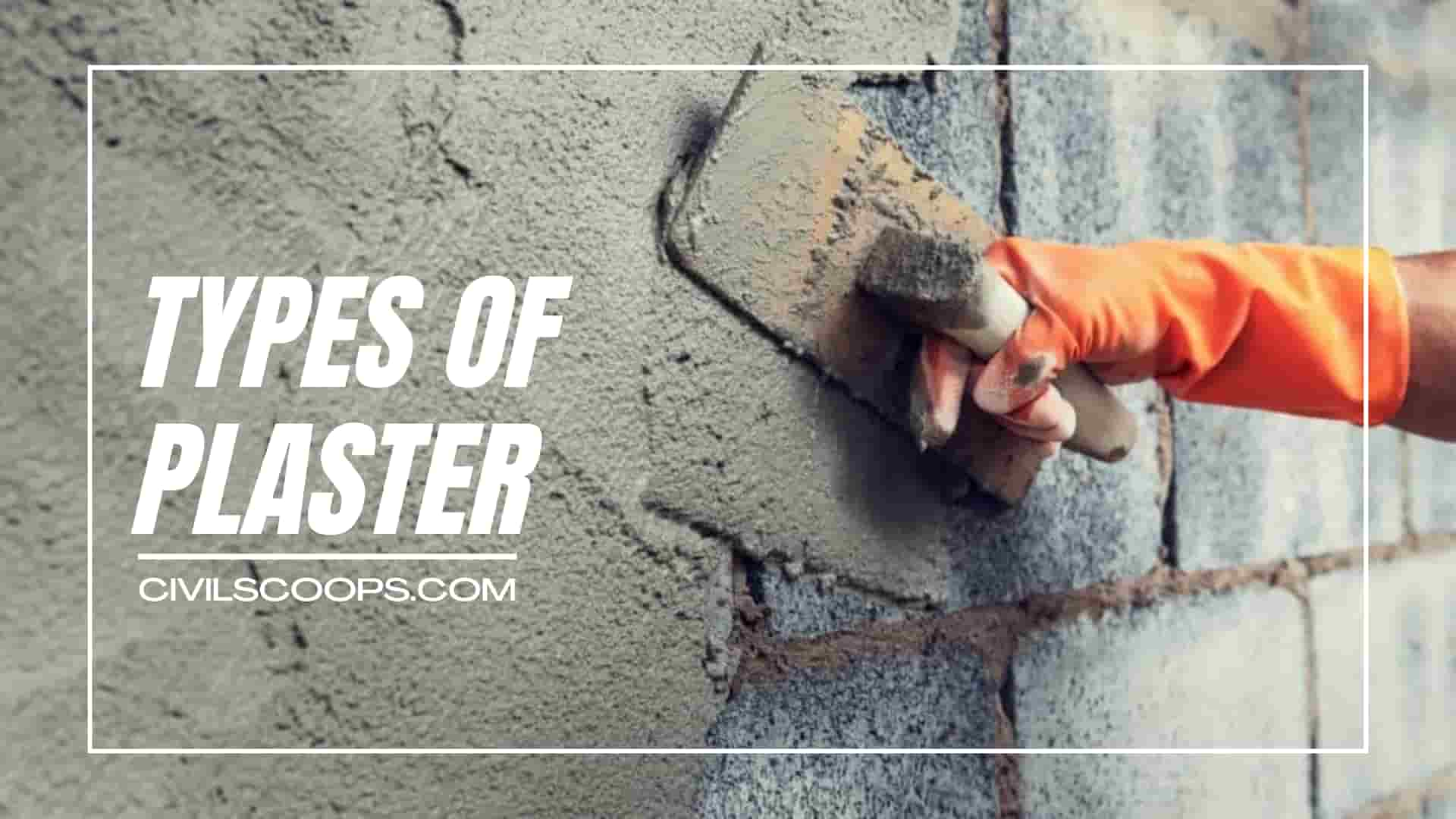
- Gypsum Plaster
- Lime Plaster
- Clay Plaster
- Heat-resistant Plaster
- Water-Proof Plaster
1. Gypsum Plaster
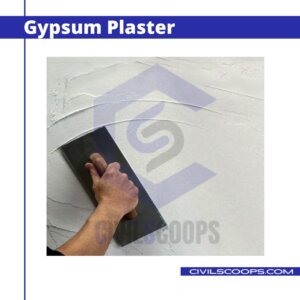
This is a widely used plaster material that can be mined naturally or produced as a by-product. Therefore, important gypsum plaster that’s employed as an undercoat finish coat and replaced cement broadly and lime. Moreover, small expansion of gypsum is considered significant propertied that prevents cracks and shrinkages.
There are various types of gypsum plaster that are produced by heating gypsum to a specific degree, for example, anhydrous gypsum is manufactured by heating gypsum up to 170 Co, and hemihydrates gypsum is produced by heating gypsum more than 170 Co.
Furthermore, depending on applications for ceilings or walls, gypsum plasters could be categorized as casting, undercoat, finish one coat, and machine-applied Plaster.
2. Lime Plaster
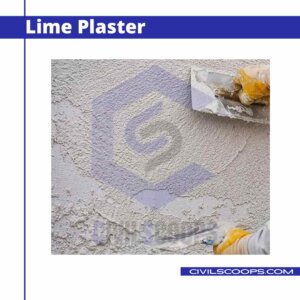
This brings us to Lime Plaster, which, as stated earlier, is made up of sand, lime, and water. The lime in question is generally Non-Hydraulic Lime, which, of course, can also be called Lime Putty.
Incredibly, the use of Lime Plaster dates back as far as 7200BC, when statues sculpted in Lime Plaster were found buried in a pit in the archaeological site of a Ghazal in modern-day Jordan. This is the perfect example of just how durable Lime Plaster is as a building material.
Often products may be used as both a Lime Plaster and a Lime Render since the Lime Putty utilized is durable enough to withstand the weather conditions encountered in external use.
This is just one of many benefits of using lime Plaster or lime render. Though this on climate and geographical location. For any help choosing the right lime plaster, please do get in touch.
3. Clay Plaster
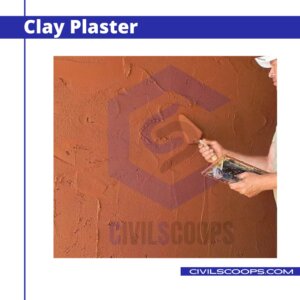
Clay plaster is considered to be a more sustainable alternative to modern plasters, using a lower embodied energy than gypsum, lime, or cement-based plasters.
It’s available with fiber additives to increase its strength and in a range of natural colors. It is breathable and doesn’t need to be painted.
4. Heat-resistant Plaster
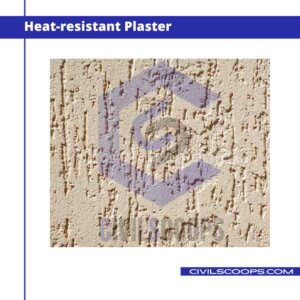
Heat-resistant plaster is a building material used for coating walls and chimney breasts and also for use as a fire barrier in ceilings.
Its purpose is to replace conventional gypsum plasters in cases where the temperature may get too high for gypsum plaster to stay on the ceiling or wall.
5. Water-Proof Plaster
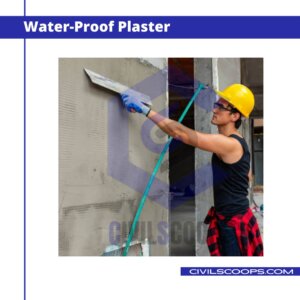
Waterproof plaster is needed for the protection of the masonry wall from the ingress of moisture and thus eliminating or reducing dampness of the wall.
The plaster is made from sand and cement mix 1: 2. Pulverized alum is added at the rate of 12 kg per cubic meter of sand.
Softsoap at the rate of 75 gms per liter is added from the water for mixing. Alum and soap react chemically and seal the pores from the plaster.
[su_box title=”FAQ” style=”default” box_color=”#333333″ title_color=”#FFFFFF” radius=”3″ class=”” id=””]
Plaster Mix Ratio
Mix cement and sand in the ratio of 1:6 (1 cement:6 sand) for the inner plastering of bricks. And for outer plastering mix it in the ratio of 1:4. On a brick wall never do plastering of thickness more than 12 or 15mm. At one go, avoid plastering of more than 12mm thickness.
Plaster to Water Ratio Chart
[su_table responsive=”yes”]
| Water | Plaster |
| 1 quart | 2 lbs. 14 oz. (1293 grms) |
| 1 1/2 quart | 4 lbs. 4 oz. (1937 grms) |
| 2 quarts | 5 lbs. 11 oz. (2585 grms) |
| 2 1/2 quarts | 7 lbs. 2 oz. (3230 grms) |
| 3 quarts | 8 lbs. 9 oz. (3878 grms) |
| 3 1/2 quarts | 10 lbs. (4522 grms) |
| 1 gallon | 11 lbs. 6 oz. (5171 grms) |
| 1 1/2 gallons | 17 lbs. 2 oz. (7756 grms) |
| 2 gallons | 22 lbs. 13 oz. (10337 grms) |
| 2 1/2 gallons | 28 lbs. 8 oz. (12923 grms) |
| 3 gallons | 34 lbs. 3 oz. (15508 grms) |
[/su_table]
Plaster Water Ratio Mold Making
The mixing ratio is 1 part water to 1.375 parts plaster, which is approximately 73 parts water to 100 parts plaster. The 73/100 ratio is often a good choice for mold making, providing an effective porosity. The ratio of water to plaster is referred to as consistency.
How to Mix Plaster Without a Drill?
If you haven’t got a mixer drill, don’t fear! A bit of wood can be used to mix the plaster as long as it’s fairly smooth. Make sure you complete this step thoroughly and smooth out any parts that are still dry or lumpy.
What Is the Ratio of Cement Slurry for Plaster?
The ratios mentioned in plastering are volumetric ratios of Cement & Sand (Ex. Cement: Sand = 1:5, 1 part of cement, and 5 parts of sand in a mortar). The overall thickness of plastering should be a minimum 20mm including two coats. The Volume of each cement bag = 50Kgs/1440 = 0.0348 m3.
Which Cement Is Best for Plastering?
OPC 43 is the best cement for plastering both exterior and interior walls of low residential buildings and OPC 53 is best for plastering high rise buildings. OPC is available in 3 grades in the market, OPC 33, OPC 43, and OPC 53.
Plaster to Water Ratio for Molds
The mixing ratio is 1 part water to 1.375 parts plaster, which is approximately 73 parts water to 100 parts plaster. The 73/100 ratio is often a good choice for mold making, providing an effective porosity. The ratio of water to plaster is referred to as consistency.
[/su_box]
[su_note note_color=”#F2F2F2 ” text_color=”#333333″ radius=”3″ class=”” id=””]
Like this post? Share it with your friends!
Suggested Read –
- 21 Different Types of Arches Construction
- Difference Between Carpet Area and Built-up Area
- What Is Fresh Concrete | 8 Properties of Fresh Concrete
- What Is Slump Cone Test | Principle of Slump Test | Types of Concrete Slump
- Difference Between Veneer and Laminate | What Is Veneer | What Is Laminate
[/su_note]
Originally posted 2022-07-11 07:06:56.
